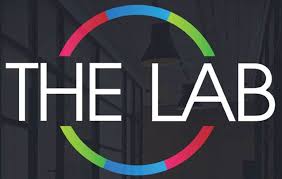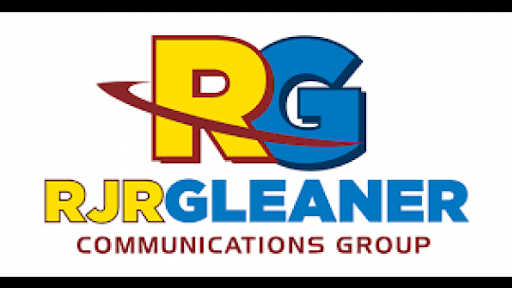By Investigative Business Reporter — Businessuite Magazine
Two familiar pillars of Jamaica’s media and advertising economy are being tested in real time. On one side is Limners & Bards (The LAB), the island’s best-known creative agency and content house; on the other is the decades-old broadcast powerhouse represented by Radio Jamaica / RJR. Once tightly coupled in a mutually profitable ecosystem — agencies buying airtime to reach mass audiences; radio stations selling reach and frequency in return — both businesses are now being unmade by the same disruptive force: digital media.
This isn’t abstract disruption. The evidence is on the balance sheets and in boardroom strategy papers. The LAB has moved from profit to loss in recent quarters even as it pivots hard into content ownership and talent management — spending aggressively to build IP for streaming and licensing deals.
Radio Jamaica’s group results show sustained, material losses as traditional ad dollars migrate to platforms that offer more targeting, measurement and programmatic buying. The financial pain on both sides makes a single point plain: the old advertising barter of creative-for-airtime no longer guarantees survival.
Two Sides Of The Same Disruption
 For decades, the formula was simple. Brands paid advertising agencies to develop campaigns; agencies bought mass-reach airtime from radio and television; broadcast groups monetized that reach; agencies and broadcasters split the advertising pie. That pie is shrinking.
For decades, the formula was simple. Brands paid advertising agencies to develop campaigns; agencies bought mass-reach airtime from radio and television; broadcast groups monetized that reach; agencies and broadcasters split the advertising pie. That pie is shrinking.
Digital platforms — social networks, streaming services and programmatic ad exchanges — sell precision: reach the audience you want, when you want them, and measure it in real time. In markets like Jamaica, advertisers increasingly prefer measurability and performance. UNESCO and regional studies have flagged the structural shift of advertising revenue from legacy media to digital channels, and Caribbean broadcasters have felt the squeeze.
Limners & Bards illustrates the agency response. Rather than plead for the old model to return, The LAB is repositioning: investing in content creation, talent management and IP that can be licensed to global platforms. The strategy is deliberate — and expensive. The LAB reported significant content investment and has publicly defended the pivot as a bet on long-term licensing revenues, even while quarterly operating results show stress as revenues and margins realign. The gamble: own the asset (content), not just the ad placement.
But owning content is not an instant cure. The LAB’s quarterly results showed a swing from small profit to a loss in a recent quarter — a cash-flow and timing problem when high production spend meets an advertising market that’s not yet fully monetizing that content. That mismatch — upfront capital outlays versus slower, licensing-led paybacks — explains why many agencies find the transition painful.
RJR: Reach Without The Revenue
 On the broadcast side, RJR’s results tell an equally stark story. The company’s publications and regulatory filings in recent reporting periods reveal sizeable year-on-year declines and outright losses as linear audiences shrink and advertisers reallocate budgets. Facilities, legacy contracts and the fixed costs of broadcast operations make it difficult for radio groups to downsize quickly enough to stay profitable.
On the broadcast side, RJR’s results tell an equally stark story. The company’s publications and regulatory filings in recent reporting periods reveal sizeable year-on-year declines and outright losses as linear audiences shrink and advertisers reallocate budgets. Facilities, legacy contracts and the fixed costs of broadcast operations make it difficult for radio groups to downsize quickly enough to stay profitable.
The practical effect is visible: advertising inventories (airtime slots) that once commanded premium CPMs now struggle to deliver the same value because advertisers can buy more targeted, cheaper impressions online — often with built-in analytics. The incumbents’ historical strengths — national reach, trusted brands and local sales teams — remain valuable, but they no longer guarantee the revenue flows they once did.
How The Giants Fight Back — And Why Small Players Suffer First
Incumbents with diversified holdings have options: bundle (cross-sell print, TV, radio, digital), monetize data, and invest in tech-enabled ad platforms. But smaller players — local radio stations and independent agencies — lack scale and capital, so they feel the pain first. The LAB and RJR are, in effect, two different versions of the same problem: legacy models under pressure; digital transition requires investment and new competencies.
In some cases, broadcasters try to become digital platforms themselves. In others, agencies try to be studios. Both moves require capabilities that are not core to the original business: data science, audience monetization, global licensing, and productized content formats. Those are expensive to build and slow to monetize — a painful truth for shareholders watching quarterly results.
What Caribbean Media And Agencies Must Do To Survive
From interviews, investor reports and regional research, a practical survival playbook emerges — one grounded both in hard economics and the Caribbean reality of small markets.
- Own or control a monetizable asset. Agencies should accelerate content/IP ownership (as LAB is doing), but combine it with distribution deals and licensing pipelines BEFORE assuming scale. Produce scalable formats that translate to streaming platforms, diasporic audiences and brand partnerships.
- Monetize audience data — ethically. Broadcasters must transition from selling airtime to selling audience segments and insights. That requires investment in CRM, first-party data capture and privacy-compliant analytics. Advertisers will pay for verified reach and conversion metrics.
- Hybridize revenue models. Don’t rely solely on spot advertising. Mix subscriptions, memberships, branded content, events, licensing, and commerce. Smaller Caribbean outlets can monetize niche communities (music, culture, sport) and sell premium experiences.
- Regional scale and partnerships. Individual island markets are small. Consolidation, content syndication and regional platform plays can spread cost and increase negotiating leverage with global streamers and advertisers. Pooling inventory and audiences improves bargaining power.
- Invest in sales and product talent. Old-school sales reps must evolve into product sellers: selling bundled campaigns, data-driven solutions and measurable outcomes. Upskilling is non-negotiable.
- Protect cash flow during transition. Manage production spend and match it to realistic licensing timelines. Where possible, co-finance content with partners or pre-sell rights to mitigate timing gaps that produced recent quarterly losses.

A Sober But Not Fatal Diagnosis
The Caribbean’s media disruption is real and accelerating. But the region also has advantages: a vibrant cultural export (music, film, sport), a global diaspora hungry for authentic content, and nimble creative talent. If agencies like The LAB can convert production investment into repeatable licensing revenue — and if broadcasters can convert trusted reach into monetizable audience products — the industry can reconfigure into a digitally native ecosystem that still celebrates local stories.
The alternative is a slow hollowing out: profitable legacy models giving way to distribution micropayments and platform dominance that extract value offshore. The choice facing Jamaica’s media leaders is stark: adapt with urgency and discipline, or watch a once-mutually dependent industry become a shadow of its former self.
—
Sources include reporting from Businessuite Online, The Gleaner, Jamaica Observer, JamStockEx filings, UNESCO research on media viability, and regional industry analysis.
When the Dollars Shifted Online: A Data-Driven Brief for Jamaica’s Media & Advertising Sector
JOL and GCML sign MOU to explore joining production and distribution logistics services
RJR Group Continues To Be Negatively Impacted By Softness In Advertising Market
The Limners And Bards Strategy Now Centred On Diversifying Beyond Traditional Advertising
Looking Forward To OCM Group Returning To Growth Path In 2025 – Faarees Hosein


